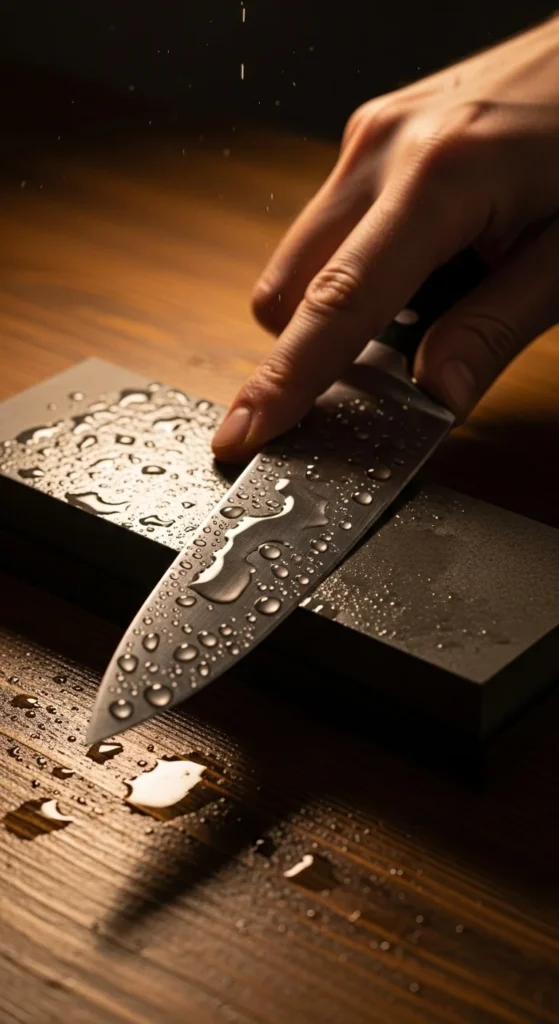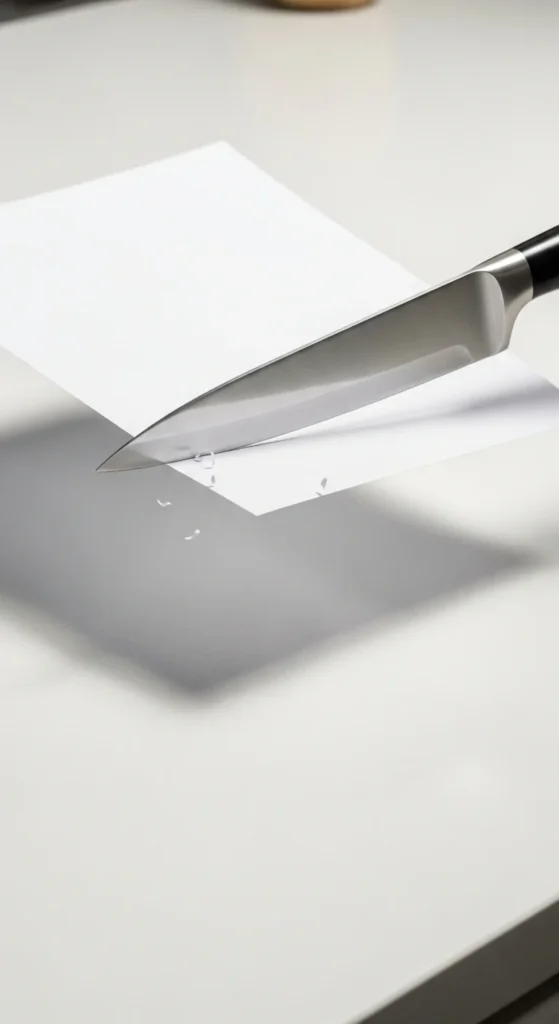
There’s nothing quite as satisfying as slicing through a tomato so smoothly that it barely squishes. A sharp knife doesn’t just make cooking more enjoyable—it’s safer, faster, and far more precise. But with everyday use, even the best knives start to dull. The good news? You can easily restore that razor-sharp edge right in your own kitchen with a few simple habits and tools.
Let’s dive into how to keep your kitchen knives sharp, efficient, and ready for action every day.
1. Start with the Right Knife Care Routine
Before you even think about sharpening, proper care is key to keeping your knives in top shape.
- Wash and dry immediately: Never toss your knives in the sink or dishwasher. Instead, hand-wash them gently with warm water and mild soap.
- Avoid harsh surfaces: Cutting on glass or marble dulls edges fast—always use wood or plastic boards.
- Store safely: Use a knife block, magnetic strip, or blade guard to prevent banging against other utensils.

Small changes in your daily habits can extend your knife’s life by years and save you from unnecessary sharpening.
2. Hone Regularly to Maintain the Edge
Most people confuse honing with sharpening—but honing is about realigning the blade’s edge, not grinding it down.
Here’s how to do it right:
- Hold your honing steel vertically with the tip resting on a stable surface.
- Place the knife at about a 15–20° angle to the steel.
- Sweep the blade down and across the steel from heel to tip.
- Repeat 5–10 times on each side.

Regular honing (every few uses) keeps your knife slicing smoothly without needing frequent sharpening.
3. Sharpen Properly When Needed
Even with regular honing, knives eventually lose their edge. When that happens, it’s time for a real sharpening session.
You have three main methods:
- Whetstone: Best for precision. Soak the stone for 10 minutes, then glide the knife at a 15° angle, alternating sides.
- Manual sharpener: Convenient for quick touch-ups—pull the blade gently through a few times.
- Electric sharpener: Great for busy cooks, but can remove more metal, so use sparingly.

Aim to sharpen every 3–6 months, depending on how often you cook. If you notice your knife crushing rather than slicing tomatoes, it’s time!
4. Learn the “Paper Test” Trick
Want to check if your knife is truly sharp? Try the paper test—it’s a chef’s favorite.
- Hold a sheet of paper upright.
- Slice downward with your knife.
- A razor-sharp edge will glide through effortlessly.
- If it snags or tears, it needs a touch-up.

This quick test helps you instantly gauge sharpness without any fancy equipment.
5. Avoid These Knife-Dulling Mistakes
Even after sharpening, daily habits can dull your blades fast. Here’s what to avoid:
- Cutting bones or frozen food with regular chef’s knives.
- Leaving knives wet or soaking in the sink.
- Using the blade edge to scrape ingredients off a board (flip it and use the spine instead).
- Tossing knives loosely in drawers.
These small errors add up—and before you know it, your knife loses that satisfying glide.
6. Give Your Knives a Spa Day
Once every few months, pamper your knives with a deep clean and oil treatment:
- Wipe blades with food-safe mineral oil to prevent rust.
- Polish handles (especially wooden ones) with a damp cloth and a touch of olive oil.
- Store them upright or in a dedicated slot.
Your knives will thank you by lasting longer, looking stunning, and performing like new every time you cook.
Final Takeaway
A sharp knife is a chef’s best friend—and with a little care, yours can stay razor-sharp for years.
Remember:
- Hone regularly.
- Sharpen wisely.
- Store and clean properly.
Now, go test your knife on that tomato and watch it glide through like magic.
Save this guide for later—your future self (and your fingers) will be grateful!
Leave a Reply